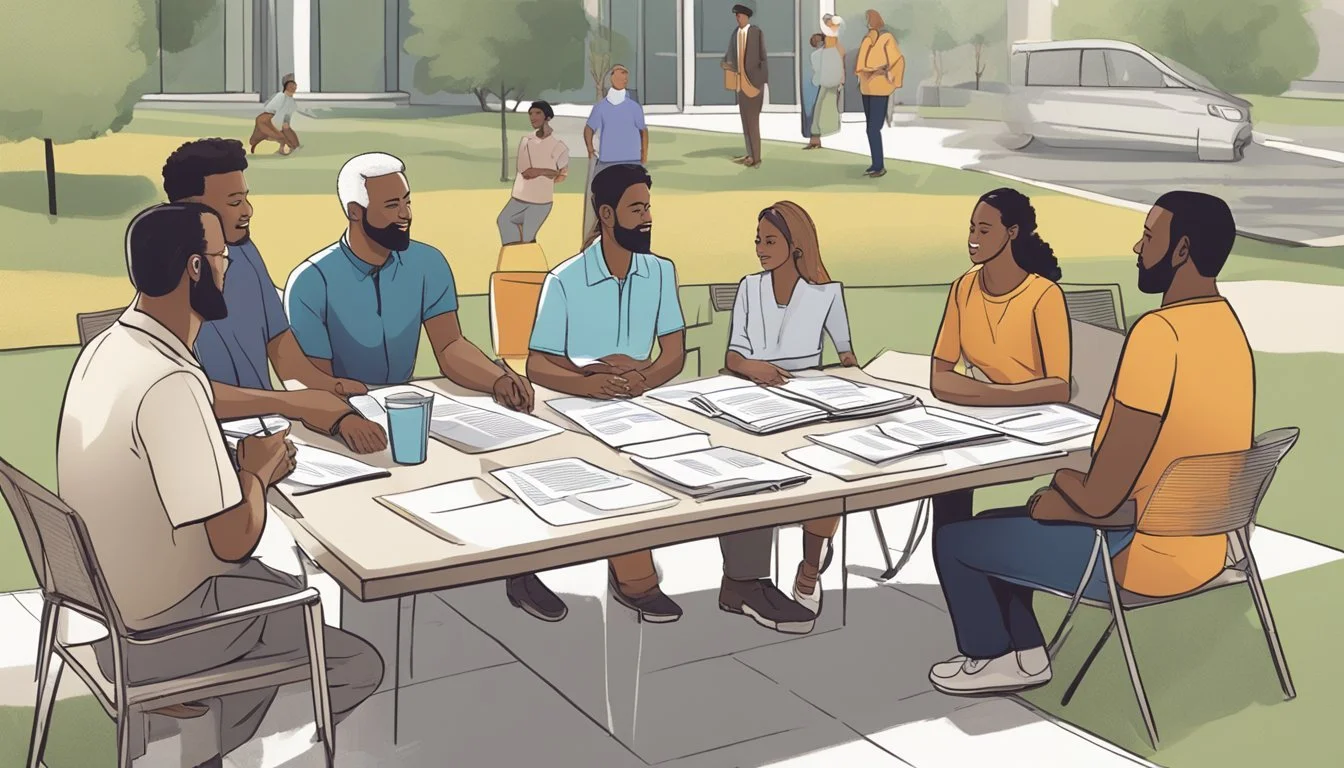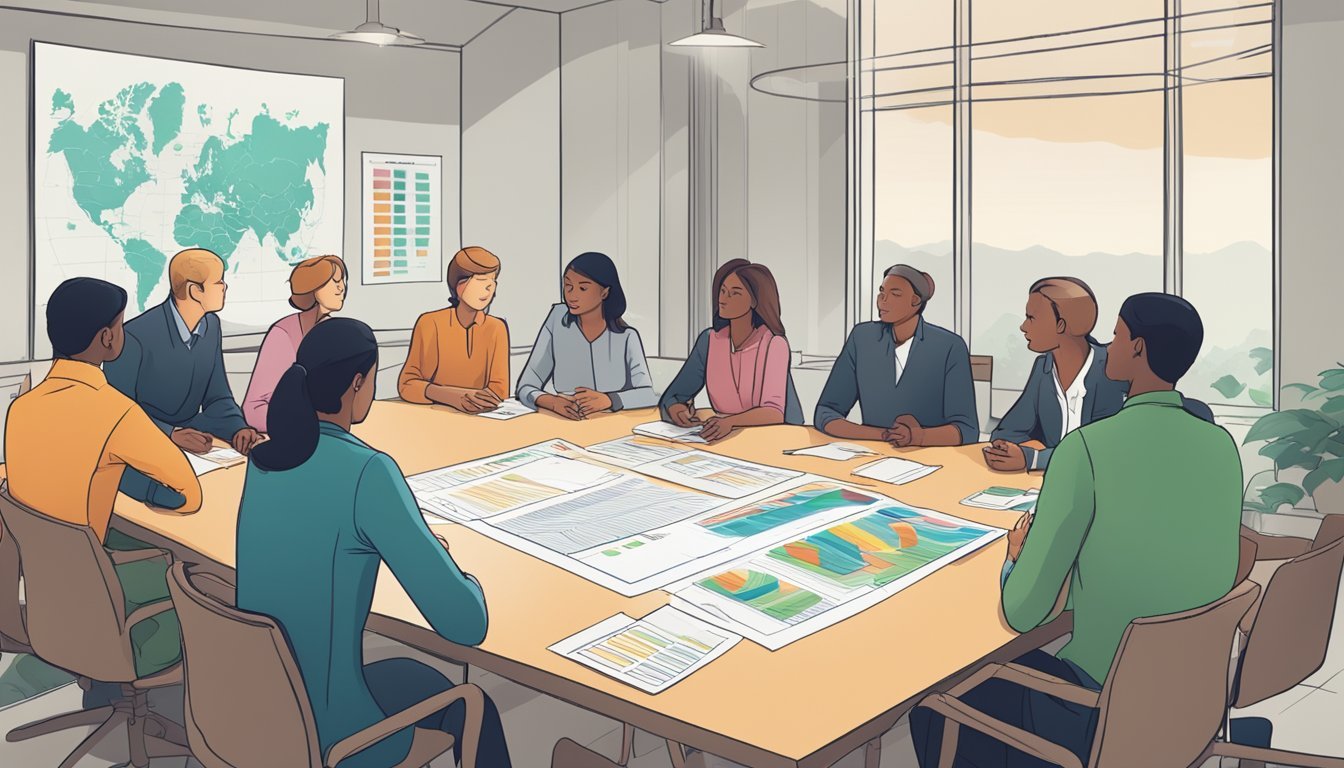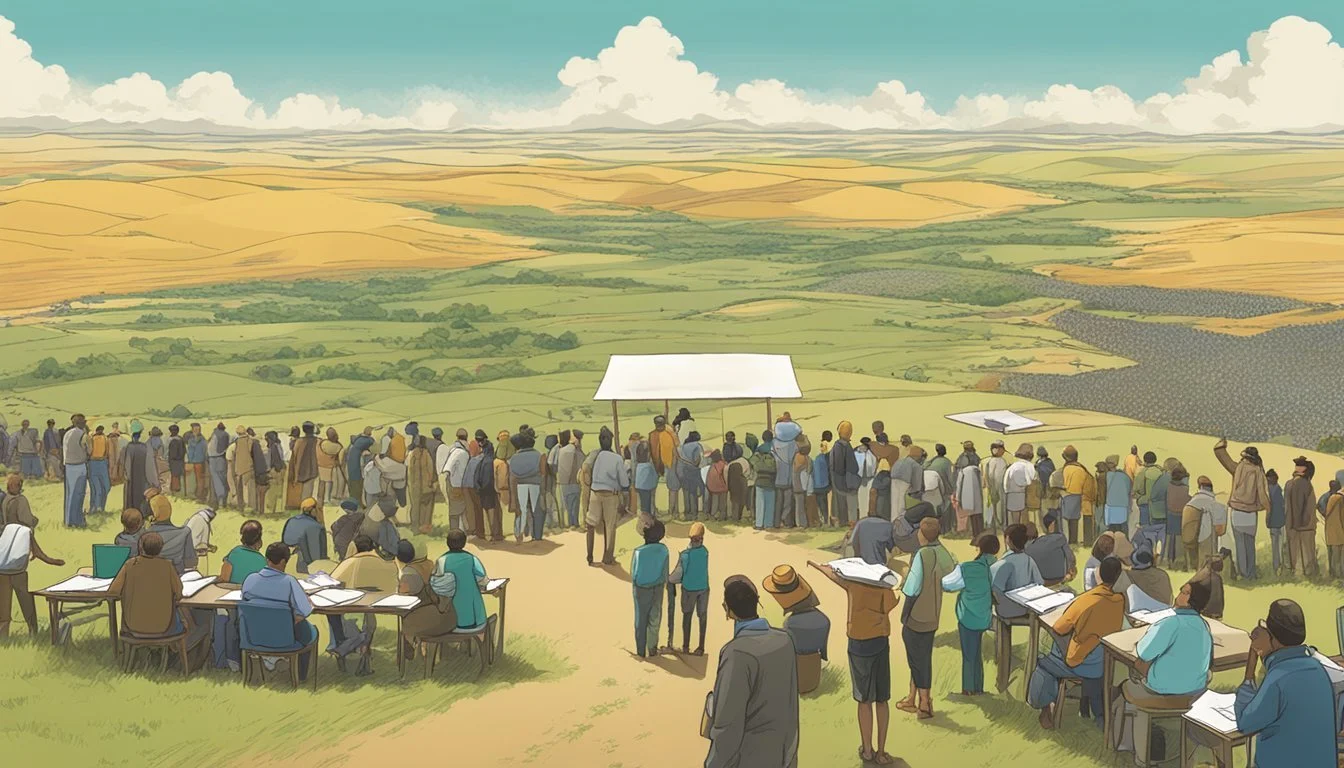How to Qualify for Free Land Programs
Essential Steps and Tips
Acquiring free land in the United States is a unique opportunity that more people are starting to explore. Many towns across the country, from Minnesota to Kansas, offer free land to individuals who are willing to build homes and contribute to the local community. To qualify for these programs, applicants typically need to commit to building a house within a certain timeframe and meet specific property size requirements.
The qualifications for these free land programs can vary widely, making it essential for potential applicants to closely review the criteria of each program. Some towns may require a financial deposit, like Osborne, Kansas, which asks for a $500 deposit held until the completion of the new home. Other locations, such as Lincoln, may have specific building size restrictions or additional incentives like free electrical hookups or building permits to attract new residents.
These opportunities not only offer a chance to own land without the significant upfront cost but also support the growth and revitalization of smaller communities. This exchange of opportunity and benefit makes free land programs an appealing option for those looking to start fresh or invest in new property.
Understanding Free Land Programs
Free land programs have their roots in historical initiatives and have evolved to address modern needs and challenges. These programs impact both rural and urban development, influencing economic and social dynamics.
History of Homesteading in the United States
The Homestead Act of 1862 was a pivotal moment in land distribution. This federal legislation provided 160-acre parcels of public land to settlers, known as "homesteaders," for a small fee. To secure ownership, settlers had to cultivate and reside on the land for five years. This act aimed to encourage westward expansion and supported the establishment of the American West. By 1900, approximately 80 million acres were distributed, facilitating significant rural development and economic growth.
Modern Free Land Programs
Contemporary free land programs often focus on urban and rural revitalization. Many small towns and cities across the United States offer free residential lots to attract new residents and stimulate local economies. Some notable examples include Richland and Claremont in Minnesota and Elwood in Nebraska. These programs typically have specific requirements, such as minimum house size and construction deadlines. Applicants may need to provide mortgage preapproval or refundable deposits to ensure compliance. These modern initiatives continue to foster community growth and affordable housing solutions.
Economic and Social Impact
Free land programs contribute to various economic and social outcomes. They promote rural development by bringing new residents to underpopulated areas, which can spur local business activity and job creation. In urban settings, programs like the Urban Homestead Program help transform vacant lots into thriving residential areas, improving property values and neighborhood safety. Socially, these programs encourage community building and provide opportunities for affordable housing, making homeownership accessible to more individuals and families. Such initiatives are crucial for maintaining vibrant and sustainable communities in both rural and urban areas.
Eligibility Criteria for Free Land Programs
To qualify for free land programs, applicants must meet specific requirements related to income, property development, and residency status. Each program has its own criteria, and understanding these can significantly improve your chances of being eligible.
Income and Financial Requirements
Many free land programs have income and financial requirements to ensure that applicants can afford to develop and maintain the property. For instance, securing a mortgage or construction-loan preapproval might be necessary to show financial stability. This provides assurance that the applicant can cover construction and living costs associated with the new property.
Applicants might also be required to demonstrate a minimum annual income. This requirement varies by program and location. Some towns offer incentives such as free electrical hookups or building permits, which can alleviate financial burdens. Thus, reviewing the specific financial criteria for each program is crucial.
Property Use and Development Standards
Each free land program typically specifies how the property must be used and developed. Common requirements include building a home on the lot within a certain time frame, often three years. For example, in Grafton, Illinois, a deposit might be required initially but refunded upon completion of the home.
Other development standards may include maintaining the property, adhering to local building codes, and ensuring that the land serves its intended purpose, such as homesteading or community development. Failure to meet these standards can result in losing the property or facing penalties.
Residency and Citizen Specifications
Residency and citizenship criteria vary widely among free land programs. Some programs require applicants to be U.S. citizens or permanent residents, ensuring they contribute to the community. For example, historical programs like the Homestead Act required participants to cultivate the land and remain on it for a set period.
Other programs may have specific residency requirements, such as living on the property for a certain number of years. This helps to ensure long-term community development and stability. Verifying these criteria with local authorities or program coordinators is essential before applying.
How to Apply for Free Land Programs
Applying for free land programs requires researching available properties, completing the application process, and utilizing various resources for support. Specific steps ensure that applicants are properly prepared to meet program requirements.
Finding Available Property
First, prospective applicants must identify regions offering free land programs. States such as Kansas, Colorado, Iowa, and Minnesota are known for such initiatives. Detailed resources, including online databases and local government websites, list available properties. For example, Minnesota towns like Richland and Claremont provide free land with additional incentives.
Applicants should also consider Alaska, Illinois, and New York, where free land is sometimes offered alongside opportunities for homesteading. Checking both state and municipal resources can uncover less-publicized programs.
Application Process Overview
The application process typically involves several steps. Initial steps include acquiring pre-approval for a mortgage or construction loan to demonstrate the financial capability to build on the free land. Applicants must fill out a formal application, often available online, detailing their plans for developing the property.
In places like Osborne, Kansas, applicants must provide a $500 deposit, which is refunded upon the completion of the new home. Different programs may have unique requirements, such as size restrictions on buildings or compliance with local zoning laws.
Support and Resources
Various forms of support are available to applicants to navigate the process. Online portals provide essential details and application forms. Local government offices can offer technical assistance for those unfamiliar with the application steps.
Organizations in states like Nebraska, Maine, and Ohio provide workshops or one-on-one help for technical aspects like financial planning and fulfilling legal requirements. High-quality support services can significantly smooth the journey from application to land acquisition.
Free Land Locations and Opportunities
Various regions across the United States offer free land programs aimed at revitalizing communities, attracting new residents, and promoting development. These initiatives often require the fulfillment of specific conditions but provide significant opportunities for those willing to invest in rural and urban developments alike.
Civic Initiatives and Municipal Programs
Several towns and cities have initiated programs to distribute free land, often with additional incentives to attract newcomers.
Buffalo, New York offers free land for urban residential development. Prospective residents may find this an attractive option due to the city's extensive infrastructure and community services.
In Curtis, Nebraska, and Elwood, Nebraska, lots are provided with incentives like assistance with construction costs. Curtis requires a refundable $500 deposit and offers the land if development is completed within a set timeframe.
Manilla, Iowa encourages new residents to build homes by offering free residential lots. New Richland and Claremont, Minnesota, have similar programs that include other perks, such as free permits and utility hookups.
Rural and Remote Developments
Rural and remote areas provide unique opportunities for those seeking a quieter life with potentially lower costs of living. These programs often target homesteaders and agricultural ventures.
Flagler, Colorado, and Plainville, Kansas, offer land to those willing to develop it for residential or agricultural purposes. These areas provide low-interest loans to aid with construction and development expenses.
Beatrice, Nebraska, employs its "Homestead Act" to grant free residential property to individuals who agree to build and reside on the land.
Osborne, Kansas, extends its offer to both residential and commercial properties, including additional financial assistance for home and business renovations.
Each location's guidelines vary, so interested parties should research and contact local authorities to ensure they meet all requirements and deadlines.
Financing and Additional Support
Securing land for affordable housing often requires financial aid and partnerships. This section details various ways homeowners can obtain financial assistance through government programs, private partnerships, and cost-share initiatives to make their dream a reality.
Government Funding and Grants
Various federal assistance programs are available to support those qualifying for free land. The Homeowner Assistance Fund, authorized by the American Rescue Plan Act, allocates funds for homeowners affected by financial hardship related to COVID-19. States and territories distribute these funds to eligible applicants. Additionally, the USDA Rural Development offers grants and loans to low- and moderate-income rural Americans, enabling them to finance critical home improvements and secure land grants.
Programs like these are essential as they provide checks and balances ensuring the aid reaches those most in need. When applying, prospective homeowners must meet specific criteria, and some programs may require evidence of financial hardship or residency in a particular area.
Private Partners and Sponsors
Private enterprises and sponsorships also play a significant role. Collaborations with private partners can unlock opportunities not available through government funding alone. Non-profit organizations often facilitate these partnerships, providing land grants through donations and private funding.
For instance, some companies might sponsor community development projects in rural areas, contributing funds towards infrastructure or housing. Local businesses, in turn, benefit from the economic growth and development these projects bring. Establishing a network with local non-profits and businesses can provide access to additional grants and resources needed for land acquisition and home building.
Cost-Share Programs
Cost-share programs are another avenue for financial support. These initiatives involve partnerships between homeowners and government entities or private organizations to share the costs associated with land acquisition and development. The cost-share mechanism typically requires a certain percentage of investment from the homeowner, with the remaining percentage covered by the partner entity.
Such programs often aim to promote sustainable development and self-sufficiency. They can make homeownership more accessible by reducing the upfront costs that would otherwise impede low-income individuals. Besides financial support, participants might also benefit from additional resources like technical assistance and project management support, further ensuring the success of their homeownership journey.
After Obtaining Free Land
After securing free land, new landowners face several important steps to establish their property and ensure compliance with local regulations. Key focus areas include development and construction as well as ongoing property management and tax obligations.
Building and Development
New landowners typically need to start with site planning and obtaining necessary permits. For residential projects, building a home involves submitting architectural plans, securing funding, and meeting zoning laws.
Economic growth can be stimulated through this development, as constructing homes or businesses often requires hiring local contractors. Homeownership program participants often receive additional guidance during this process.
Security measures should also be incorporated during the build phase. Installing alarm systems, locks, and other deterrents can enhance personal and property safety.
Property Management and Taxes
Once development is complete, landowners must shift their focus to managing the property effectively. Regular maintenance of the home or business premises is essential, including landscaping, repairs, and inspections.
Paying property taxes is a critical component of property management. Taxes vary by location and are based on property value. Familiarity with local tax requirements helps avoid penalties and ensures continuous land ownership.
Investing in affordable housing and economic growth initiatives can also be beneficial. These programs often offer tax incentives and grants, which can help offset ongoing costs and contribute to community development.
Contact Information and Support
Qualifying for free land programs often involves engaging with specific government offices and departments. Ensuring you have the right contact information and support can assist in navigating the process.
Local Government and Community Offices
Local government and community offices are primary points of contact for many land-related programs. Municipal offices often provide information on local regulations and land use policies. They handle inquiries related to initial land applications.
Community resource centers may also offer technical assistance. These centers frequently have help desks or phone lines specifically dedicated to land program queries. Reach out directly to these offices for specific concerns, especially if you encounter issues with your application.
US Department of Agriculture and Rural Development
The US Department of Agriculture (USDA) and Rural Development offices are critical for many federal land programs. The USDA Farm Service Agency (FSA) administers programs like the Conservation Reserve Program (CRP).
To get support, visit the local USDA service center. They offer one-on-one assistance, helping with program applications and eligibility checks. You can call the USDA helpline for advice. It's crucial to have your farm number and relevant documents ready when contacting them for technical assistance.






